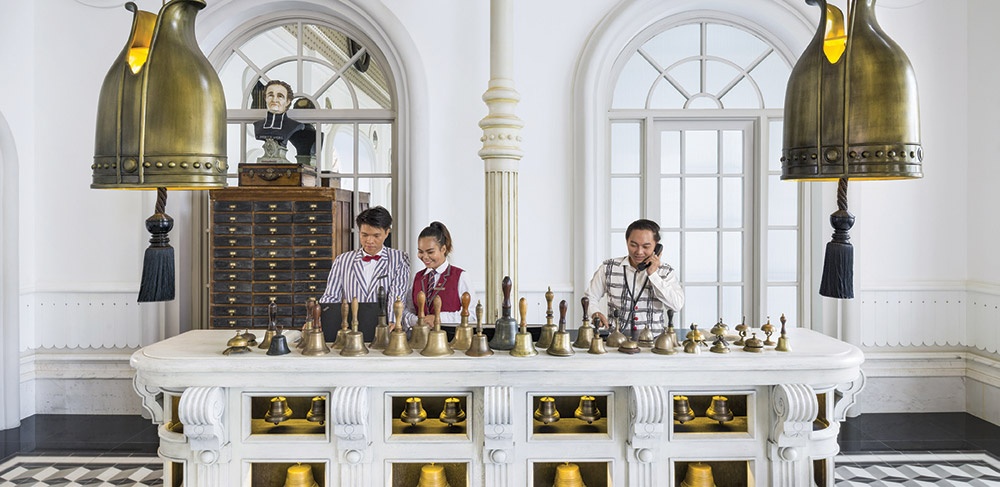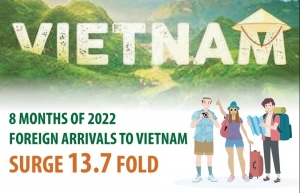Tackling the severe labour shortages in tourism
Tourism giant Vinpearl has been attempting to both retain talent and recruit more over the peak summer season. “It is difficult to recruit entry-level personnel,” said Hung Luong, general manager of Vinpearl Luxury Landmark 8. “And to find suitable management personnel, it seems to get harder and harder. We have to spend a lot of time training the next class of personnel to fill the gap.”
 |
| Tackling the severe labour shortages in tourism |
Vinpearl is currently one of the largest domestic hotel brands in Vietnam with a chain of 34 hotels in many famous tourist destinations, including major resorts in Danang, Nha Trang, and Phu Quoc. Although owning about 18,000 rooms throughout the system, many Vinpearl hotels currently only operate at about half capacity due to a lack of service personnel, while the occupancy rate could have been more than 90 per cent.
Meanwhile, Viet Le, CEO of Santa Vietnam, a small-size hotel with more than 20 rooms in Hoi An, also shared his desire to recruit much more employees compared to now.
“Santa has about 20 employees but we require double the number of employees in the next few months to prepare to welcome international guests to Vietnam for the year-end holidays,” Viet said.
The hotel and tourism industry is gradually reviving with a vibrant summer. While the total number of domestic travellers reached nearly 80 million, the long-term effects of the pandemic have not been resolved quickly.
One of the main problems around this revolves around the waves of workers who left tourism entirely during the pandemic peak, never to return. A survey on tourism personnel conducted by the Department of Culture, Sports and Tourism of Ho Chi Minh City at the end of 2021 showed that the number of employees in the tourism industry changing to other occupations accounted for 26 per cent. Around 33 per cent of employees intended to change jobs after the pandemic, of which 43 per cent were workers with more than 10 years of experience.
In addition to the impact of the pandemic, the remuneration and income levels of the hotel industry are still not attractive enough to attract workers compared to other industries.
According to a survey by Hoteljob.vn in June, which interviewed nearly 600 personnel at restaurants and hotels in popular tourism hotpots in Vietnam, the average income ranged from $217-1,300 a month depending on the position. Most surveyed respondents shared that they only have one day off a week and, when compared with unskilled workers and factory workers, there is not much difference between the income level and the number of days of leave.
“The salary level of workers working in the manufacturing sector, including overtime wages, is around $435 per month. This is also the reason why nearly half of all employees working in the hotel industry are not satisfied with their current income,” said Viet Le of Santa Vietnam, who also owns the Hoteljob.vn website.
However, with the recovery of the tourism industry, the income level of workers in the hotel sector is expected to gradually increase.
Thai Phuoc Vu, general manager of Novotel Saigon Centre, a member of Accor Group, agreed that the tourism sector has shown signs of recovery, leading to a shortage of human resources and extremely large recruitment demand in the future.
“The number of hotels of Accor will double in the next five years and increase five times over in the next decade. We are still continuously recruiting personnel to meet current needs as well as training to prepare for the future,” Vu said.
Nguyen Manh Tuong, New World Hotel Saigon’s front desk manager, added that the emergence of new hotels also aggravated the shortage of personnel. “Most hotels have fallen into a shortage of personnel. An employee may have to hold many different positions such as a mix of receptionist, customer service, driver, and doorman,” Tuong said.
According to statistics from the Vietnam National Administration of Tourism in July, Vietnam has about 700,000 accommodation establishments in all segments with a total workforce of 485,000 people, an average of 0.69 people per room.
It is forecasted that by 2025, Vietnam will need as many as 1 million rooms and by 2030 need 1.3-1.45 million rooms. Thus, the demand for accommodation workers in 2025 will be more than 800,000 people and in 2030 will be more than 1 million. On average, the hotel industry needs to add more than 60,000 workers each year.
 | Foreign arrivals to Vietnam surge 13.7 fold in eight months of 2022 Vietnam has welcomed more than 1.44 million international arrivals in the first eight months of 2022, a 13.7-fold rise from a year earlier, data showed. |
 | Business tourism shaping up to become core national asset The MICE (meeting, incentive, convention, and exhibition) segment could gain traction and help lead the wave of tourism recovery in Vietnam, if post-pandemic restrictions are eventually eased. |
What the stars mean:
★ Poor ★ ★ Promising ★★★ Good ★★★★ Very good ★★★★★ Exceptional
Related Contents
Latest News
More News
- Dalat leads Vietnam’s 2025 search trends (December 09, 2025 | 13:44)
- Vietnam welcomes record wave of international visitors (December 09, 2025 | 13:43)
- Vietjet launches daily Manila flights to celebrate year-end festive peak season (December 05, 2025 | 13:47)
- The destinations powering Vietnam’s festive season travel demand (December 04, 2025 | 18:33)
- Vietnam named among the world’s most exciting winter destinations (December 04, 2025 | 15:10)
- Phu Tho emerges as northern Vietnam’s new tourism hub (December 01, 2025 | 17:00)
- Vietjet completes Airbus A320/A321 updates ahead of deadline (December 01, 2025 | 09:49)
- Vietjet resumes Con Dao flights from early December (November 28, 2025 | 15:24)
- Free tickets, Lunar New Year promotions on offer at Vietjet Mega Livestream (November 26, 2025 | 15:32)
- Scandinavian Airlines and Vietnam Airlines broaden agreement with new routes (November 25, 2025 | 17:04)

 Tag:
Tag:


















 Mobile Version
Mobile Version